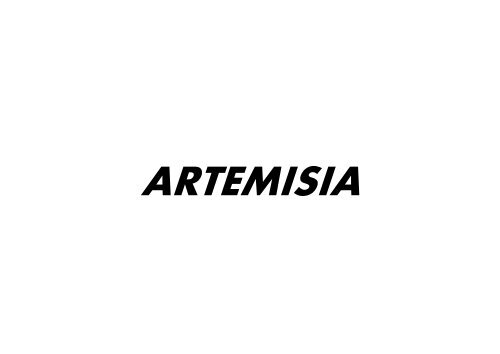You also want an ePaper? Increase the reach of your titles
YUMPU automatically turns print PDFs into web optimized ePapers that Google loves.
<strong>ARTEMISIA</strong>
You may not know<br />
it yet, but this is a<br />
very important<br />
name.
Artemisia is the<br />
genus name of a<br />
group of plants that<br />
are known<br />
psychoactives.
Plants of this genus<br />
induce deep sleep.
They calm you<br />
down.
Relieve anxiety.
Reduce pain and<br />
swelling in muscles.
Among other<br />
things…
Now, I know you all<br />
thought it…
You thought I might<br />
be a crazy…<br />
little
“What in the world<br />
is this girl talking<br />
about….?”
“Legal drugs…?”
“You buy them<br />
online…?”
I know you thought<br />
it was a little<br />
kooky…maybe a<br />
little funny.
There is something<br />
we need to discuss<br />
though…
And it’s not funny at<br />
all
“7.6 MILLION people<br />
die each YEAR from<br />
cancer…” (World<br />
Cancer Day)
“In adults 20 and older,<br />
more than one in every 10<br />
people suffers from<br />
DIABETES…
and in seniors (65 and<br />
older), that figure rises to<br />
more than one in four.”<br />
(Healthline Networks)
But what does<br />
DIABETES and<br />
CANCER have to do<br />
with Artemisia?
EVERYTHING
Before that can be<br />
explained, we have<br />
to learn a little bit of<br />
background<br />
information…
CANCER:<br />
Think you can DEFINE<br />
it?
“A disease in which<br />
abnormal cells divide<br />
uncontrollably and<br />
destroy body tissue”<br />
(Mayo Clinic)
Easy enough?
How about<br />
diabetes?
“A group of<br />
diseases that result<br />
in too much sugar in<br />
the blood, or high<br />
blood glucose”<br />
(Mayo Clinic)
Two VERY different<br />
diseases…
But they have ONE<br />
thing in common.
<strong>ARTEMISIA</strong> can help!
Artemisia contains 2<br />
active ingredients.
THUJONE<br />
&<br />
EUPATILIN
Thujone offers an<br />
abundance of<br />
medical applications
In a study done by Haj<br />
Baddar, Aburjai, Taha,<br />
and Disi in 2011, the<br />
possibility of thujone<br />
being a treatment for<br />
diabetes was explored.
Haj Baddar et al. were<br />
the “first [to perform an]<br />
experimental study on<br />
the effect of thujone on<br />
diabetic rats”<br />
(Lachenmeier, Walch<br />
2011)
It was concluded that<br />
“thujone [had] potently<br />
corrected the levels of<br />
serum cholesterol and<br />
triglycerides” in the<br />
induced-diabetic rats<br />
(Haj Baddar et al. 2011).
So…what does that<br />
really mean?
Thujone helped to<br />
reverse the effects of<br />
diabetes, therefore<br />
proving itself to be a<br />
worthy treatment to<br />
combat the disease.
And Cancer?
In a study lead by<br />
Kodappully S. Siveen of<br />
the Department of<br />
Immunology at Amala<br />
Cancer Research Centre<br />
of India…
it was discovered that<br />
thujone had the ability<br />
to “[inhibit] lung<br />
metastasis induced by<br />
melanoma cells in mice”<br />
(Siveen, Kuttan 2011).
So why’s that other<br />
active ingredient<br />
important?
Eupatilin ALSO<br />
combats cancer.
Eupatilin “induces<br />
apoptosis and …<br />
cell cycle arrest in<br />
human melanoma<br />
cells” (Al Shawi, et<br />
al.)
BTW…
Apoptosis refers to<br />
cell’s programmed<br />
cell-death.
Each cell in your<br />
body is supposed to<br />
“know” when to<br />
reproduce other<br />
cells and eventually<br />
die.
Cancer cells don’t<br />
know when to die.
They just reproduce
And reproduce…
And reproduce…
Until YOU die
[insert foot in<br />
mouth]
Too soon, huh?
So…plants<br />
belonging to the<br />
genus Artemisia<br />
help to cure both<br />
cancer and<br />
diabetes…
And you’re just now<br />
hearing about it…
Why???
The sad truth is that<br />
there’s a catch to all<br />
of this…
The active<br />
ingredients Eupatilin<br />
and Thujone are<br />
coined as “active<br />
ingredients” for a<br />
reason.
In high doses, both<br />
can lead to seizurelike<br />
convulsions,<br />
and possible death.
Thujone can also<br />
cause unintentional<br />
abortion in women<br />
by inducing uterine<br />
contractions.
To avoid the<br />
dangers, yet reap<br />
the benefits, more<br />
research needs to<br />
be done.
Without more<br />
research, no<br />
progress will be<br />
made.
Some may say it’s<br />
too dangerous…
Some may say it’s<br />
too “out there” to<br />
be possible…
But an old saying<br />
remains true…
You don’t know<br />
until you know.
Maybe it ends in<br />
failure, but MAYBE it<br />
leads to success!
Think about the<br />
countless number of<br />
failures that science<br />
has produced.
Thomas Edison once<br />
said…
“I have not failed.<br />
I’ve just found 10,000<br />
ways that won’t<br />
work.”
Maybe the use of<br />
Artemisia in<br />
combatting cancer<br />
and diabetes is<br />
fruitless.
It is entirely likely<br />
that it will not work<br />
at all.
But what if it were<br />
the 1 in 10,000 that<br />
worked?
What if we could<br />
use it as an<br />
affordable, effective<br />
treatment?
We owe it to ourselves<br />
and the millions of<br />
people facing these<br />
grueling diseases to<br />
explore every option<br />
available.


